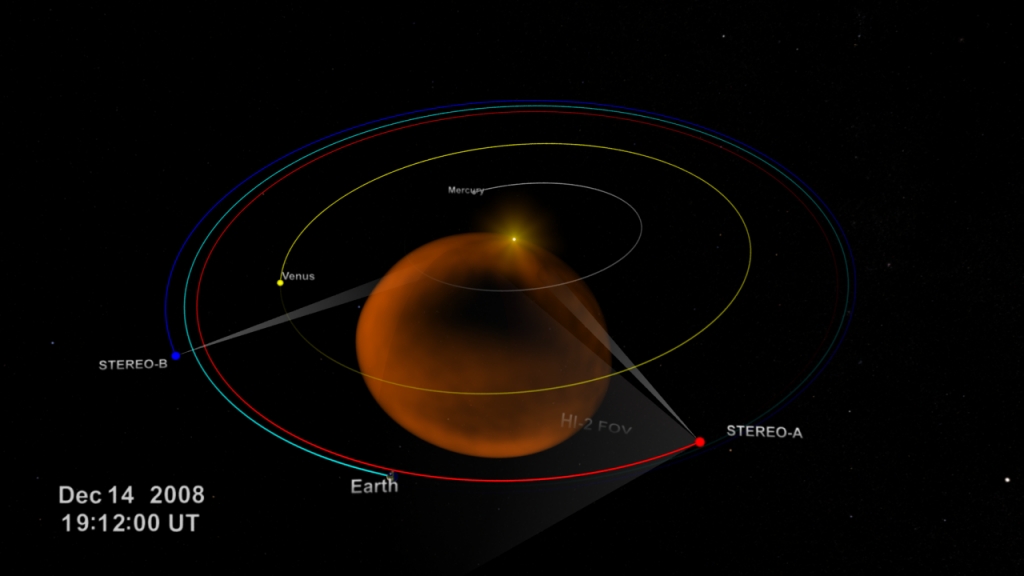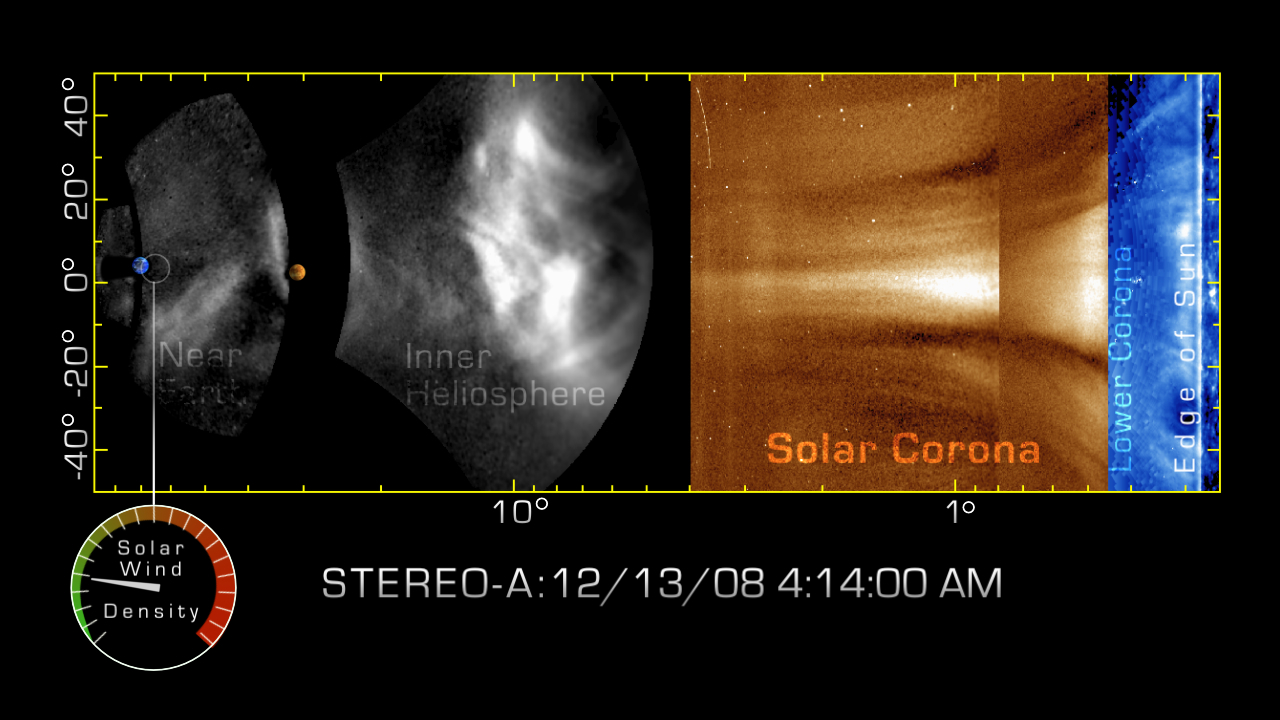Sun's Weather Encompasses Earth
The sun regularly spews forth bursts of particles and magnetic fields known as a coronal mass ejection, or, CME. A CME starts small in solar terms—just a few hundred times the size of the Earth—but it grows and changes as it travels toward the edges of the solar system. Scientists have been observing these events with satellites for decades, but tracking the details of an ejection's growth from original seed to complex structure near Earth has been more challenging. In fact, scientists recently used three NASA spacecraft—STEREO-A, WIND and ACE—to create the first visual record of a CME's path from the sun to the Earth. The orbiting instruments captured the CME's birth on Dec. 12, 2008 at the sun's surface, its exponential growth and its ultimate engulfing of the Earth about three days later. These ejections are common but large solar events can alter our magnetic atmosphere to such a degree that communications signals from GPS or telecom satellites are temporarily degraded beyond recognition. This visualization allowed scientists to watch how features early in the CME ultimately create the form seen closer to Earth, with a bright leading edge and trailing evacuated cavity.

Watch what scientists have just recorded for the first time: explosive space weather from start to finish.
The CME was ten billion times fainter than the moon, but cutting-edge processing techniques sharpened the image's visibility.
Scientists used three satellites to create a never-before-seen view of a coronal mass ejection.

With views from the side of the sun, the STEREO spacecraft can visually track an Earth-directed CME more easily than from head on.
For More Information
See NASA.gov
Credits
Please give credit for this item to:
NASA's Goddard Space Flight Center Scientific Visualization Studio
-
Animators
- Walt Feimer (HTSI)
- Tom Bridgman (Global Science and Technology, Inc.)
- Scott Wiessinger (USRA)
- Craig DeForest (SwRI)
-
Video editors
- Scott Wiessinger (USRA)
- Swarupa Nune (Vantage)
-
Narrator
- Joycelyn Thomson Jones (NASA/GSFC)
-
Producer
- Scott Wiessinger (USRA)
-
Scientists
- Craig DeForest (SwRI)
- David Webb (Boston College)
- Alysha Reinard (NOAA)
-
Writer
- Karen Fox (ADNET Systems, Inc.)
Release date
This page was originally published on Tuesday, September 13, 2011.
This page was last updated on Wednesday, May 3, 2023 at 1:53 PM EDT.

